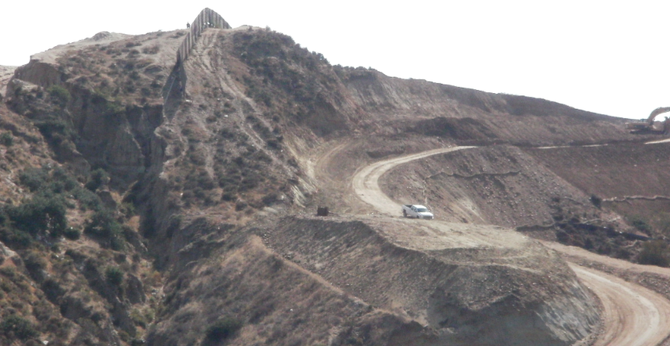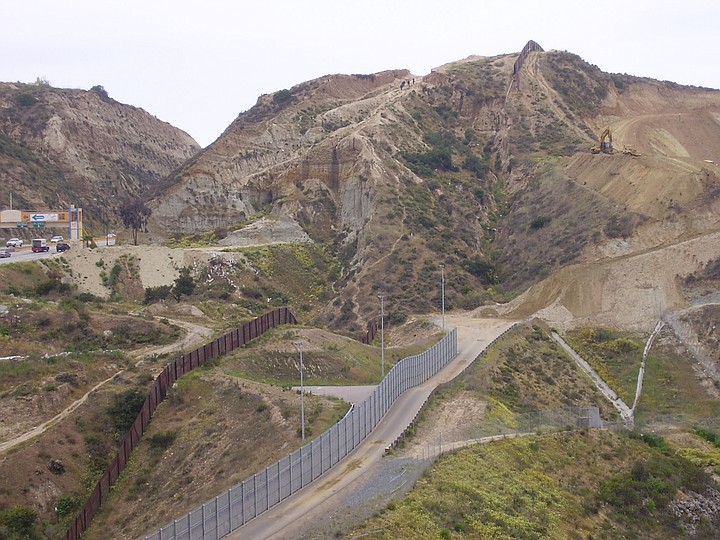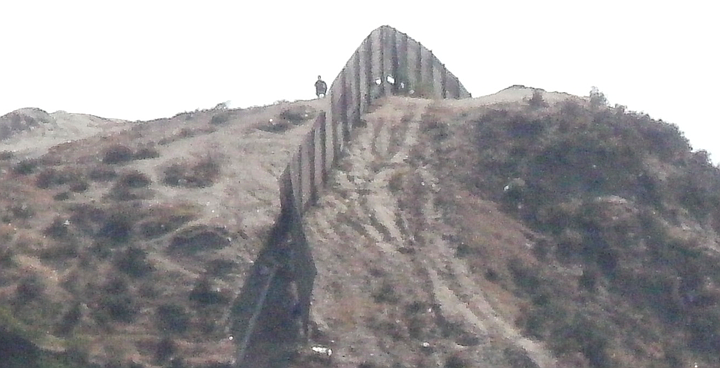 Facebook
Facebook
 X
X
 Instagram
Instagram
 TikTok
TikTok
 Youtube
Youtube

The U.S. Border Patrol recently finished pouring concrete on an extraordinary road that's less than a half mile long but is so steep and twisty that it couldn't be built by private contractors.
The road crosses the top of Bunker Hill — so named for the World War II bunkers built on top — and goes within a few feet of the border fence. Before the road was built, patrol agents had to drive around to the west side and go up the only road — one that left them with a lot of running to do while precious minutes were lost when illegal immigrants ran down the hill and into Goat Canyon, hiding in the brush.
"This will definitely help with agent safety, improve our response times, and let us keep our agents and vehicles in the area to serve as deterrents," spokeswoman Blanca Guerra said.

The road was designed by the Army Corps of Engineers Joint Task Force and was built by U.S. Marines from Camp Pendleton and U.S. Army soldiers from Fort Lewis in Washington. It took four months to build, which involved carving the road into steep hillsides, setting up a drainage culvert, running electricity, and then connecting the road to existing road on each end.
The road is at one of the few spots west of San Ysidro port of entry that's not covered by two or three fences, so it's one of the more choice places for human smugglers, and there's often a “spotter” on the top watching Border Patrol activities and waiting for an opportunity to send runners through the hole.

Several times during construction, hopeful illegal immigrants tried to blend in with the soldiers and sneak in but were apprehended. The 70-year-old bunkers were protected during the construction.


The U.S. Border Patrol recently finished pouring concrete on an extraordinary road that's less than a half mile long but is so steep and twisty that it couldn't be built by private contractors.
The road crosses the top of Bunker Hill — so named for the World War II bunkers built on top — and goes within a few feet of the border fence. Before the road was built, patrol agents had to drive around to the west side and go up the only road — one that left them with a lot of running to do while precious minutes were lost when illegal immigrants ran down the hill and into Goat Canyon, hiding in the brush.
"This will definitely help with agent safety, improve our response times, and let us keep our agents and vehicles in the area to serve as deterrents," spokeswoman Blanca Guerra said.

The road was designed by the Army Corps of Engineers Joint Task Force and was built by U.S. Marines from Camp Pendleton and U.S. Army soldiers from Fort Lewis in Washington. It took four months to build, which involved carving the road into steep hillsides, setting up a drainage culvert, running electricity, and then connecting the road to existing road on each end.
The road is at one of the few spots west of San Ysidro port of entry that's not covered by two or three fences, so it's one of the more choice places for human smugglers, and there's often a “spotter” on the top watching Border Patrol activities and waiting for an opportunity to send runners through the hole.

Several times during construction, hopeful illegal immigrants tried to blend in with the soldiers and sneak in but were apprehended. The 70-year-old bunkers were protected during the construction.
Comments